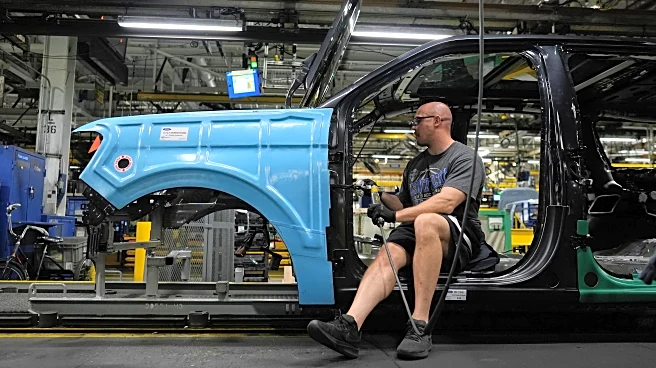Rapid Read • 8 min read
The Association for Advancing Automation (A3) has reported a steady increase in North American robot orders during the first half of 2025. The organization, based in Ann Arbor, Michigan, noted a 4.3% rise in robot orders and a 7.5% increase in revenue compared to the same period in 2024. This growth is seen as a positive indicator for continued investment in automation amidst a complex economic landscape. The automotive sector led the growth with a 34% year-over-year increase in units ordered, while non-automotive sectors accounted for 56% of total units ordered in the second quarter. Key sectors driving this growth include life sciences, electronics, and other non-automotive manufacturing industries.
AD
The increase in robot orders signifies a broader trend towards automation as a central component of business strategy in North America. This shift is driven by factors such as reshoring, labor shortages, and the need for greater operational efficiency. The growth in automation is not only about improving efficiency but also about building resilience and flexibility to remain competitive in a rapidly changing global market. Industries such as life sciences and electronics are particularly benefiting from this trend, indicating a diversification of automation applications beyond traditional automotive manufacturing.
If the current growth patterns continue, the North American robotics market could surpass 2024 levels by mid-single digit growth rates by the end of the year. A3 plans to expand its reporting to include growth trends by sector, particularly focusing on collaborative robots, which are designed to work alongside humans in space- or labor-constrained environments. The organization will also host several industry-leading events, including conferences on intelligent vision, industrial AI, and robot safety, which may further drive interest and investment in automation technologies.
The rise in automation reflects a significant shift in how industries approach workforce management and operational efficiency. As automation becomes more integrated into business strategies, companies may face ethical and cultural challenges related to workforce displacement and the need for retraining employees. Additionally, the growing role of collaborative robots highlights the importance of designing systems that can safely and effectively work alongside human workers, potentially reshaping workplace dynamics and safety standards.
AD
More Stories You Might Enjoy













